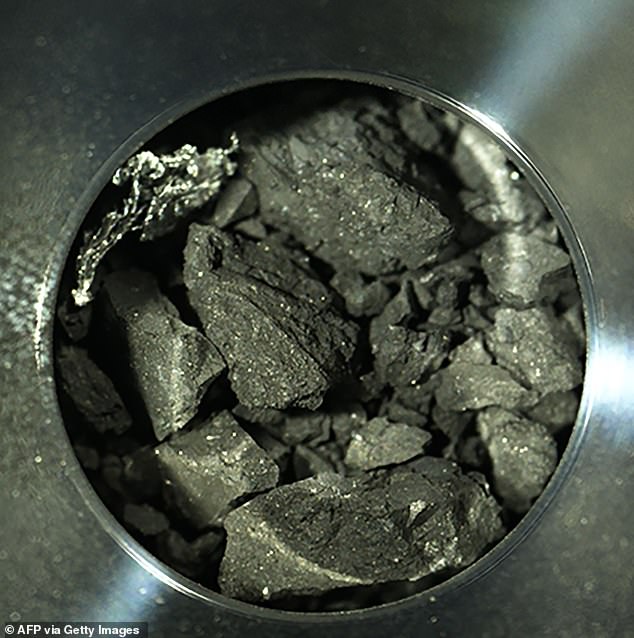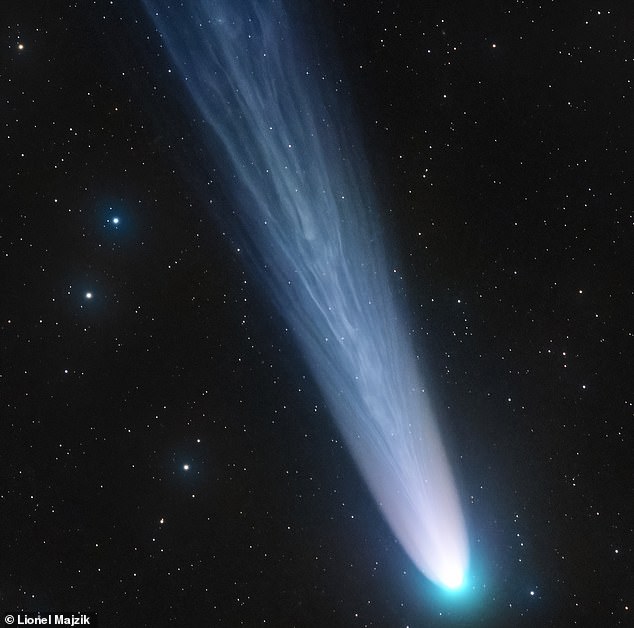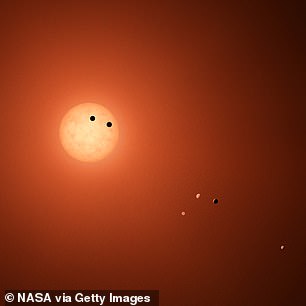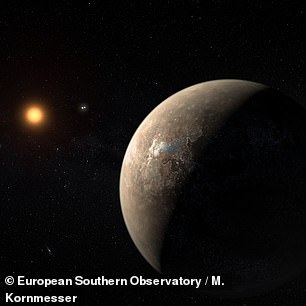Did life on Earth arrive on a comet? Key molecules could have been delivered by ‘bouncing’ space rocks – and scientists say the same could happen to other planets in the Milky Way
>
It’s one of the biggest unanswered questions in science – if there is life outside Earth, where is it?
Now, researchers from the University of Cambridge have narrowed the scope of the search by identifying the right conditions for comets to deliver life-starting molecules.
It has long been thought that the building blocks of life may have arrived on Earth on a comet, and research now suggests this could happen to other planets in the Milky Way.
The motion of ‘bouncing’ comets is slowed as they pass from planet to planet, ensuring that the necessary molecules are able to survive the impact.
Scientists say the best place to look for extraterrestrial life is in the habitable zone of “pea-in-a-pod” systems where planets are closely clustered together.
Comets contain prebiotic compounds that form the building blocks of life, and may have delivered them to Earth.

Planets in the habitable zone where liquid water can exist may have obtained the necessary prebiotic compounds when comets bounced in from outside the planetary system.
Comets, frozen chunks of rock and ice, are often rich in prebiotic compounds that can form the building blocks of organic life.
For example, samples taken from the asteroid Ryugu by a Japanese probe in 2022 were shown to contain intact amino acids and vitamin B3.
Comets also contain large amounts of hydrogen cyanide (HCN), which, despite its deadly name, is an important molecule for the basis of life.
“We’re learning more about exoplanetary atmospheres all the time, so we wanted to find out if there were planets where complex molecules could also be delivered by comets,” says study lead author Richard Anslow of the University of Cambridge.
“It is possible that the molecules that gave rise to life on Earth came from comets, so the same could be true for planets elsewhere in the galaxy.”

Soil samples from the Ryugu asteroid have been found to contain more than 20 different amino acids as well as vitamin B3, which could be the basis of life on a planet like Earth.
However, comets must move at less than 9.3 miles per second (15 km/s) for the vehicles to survive the heat and force of planetary impact.
For smaller planets like Earth, the minimum impact velocity can exceed 12.4 miles per second (20 km/s), at which point only 0.2% of the HCN survives.
However, the researchers found that comets could slow down to the correct speed if they passed through a chain of exoplanets.
Conditions are best in so-called “pea-in-a-pod” systems, where planets orbit their star in a tight cluster, rather than spread out across the orbital plane.
“In these crowded systems, every planet has a chance to interact with and trap the comet,” Anslow said.
“It is possible that this mechanism is how prebiotic molecules end up on planets.”
The researchers found that this effect was most significant for low-mass stars, known as M dwarf stars, which make up 70% of the stars in the region around our sun.
Typical collision velocities around low-mass stars tend to be higher, meaning comets need to slow down more to ensure they can deliver material.
However, the larger the planet, the less chance the prebiotic molecules have of arriving, as larger planets have a higher escape speed.

In our solar system, comets from beyond the orbit of Neptune are pulled toward the sun where they are pulled into the inner solar system by Jupiter’s gravity
The researchers therefore noted that Mars was likely to receive a larger and more complex array of particles from comets, as its mass is about half that of Earth.
This discovery will allow scientists to narrow down the choice of planets where life can be found.
“It’s exciting that we can start to determine what kind of systems we can use to test different asset scenarios,” says Mr. Anslow.
It is a different way of looking at the great work that has already been accomplished on Earth. What molecular pathways have led to the enormous diversity of life we see around us? Are there other planets with the same paths?
For example, the study authors compared the stars Proxima Centauri and TRAPPIST-1 to see how likely they are to harbor life.


This study will help us narrow the search for life, as systems with densely packed planets like TRAPPIST-1 (left) are more likely to slow down comets than sparse systems like Proxima Centauri (right).
Although Proxima Centauri, a low-mass star and the closest star to our sun, has a planet in its habitable zone, there is only one other planet in the system that might slow down an incoming comet.
Meanwhile, TRAPPIST-1, a cold red dwarf located 40.66 light-years from the Sun, has three Earth-like planets in the habitable zone and a tight planetary system.
“This resulting structure would lead to much higher collision velocities compared to the TRAPPIST-1 planets,” Mr. Anslow and his colleagues wrote.
“This would, in turn, significantly reduce the efficiency of any comet delivery.”
(Tags for translation) Daily Mail
